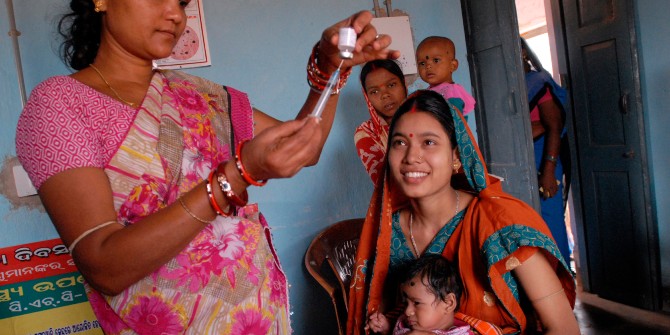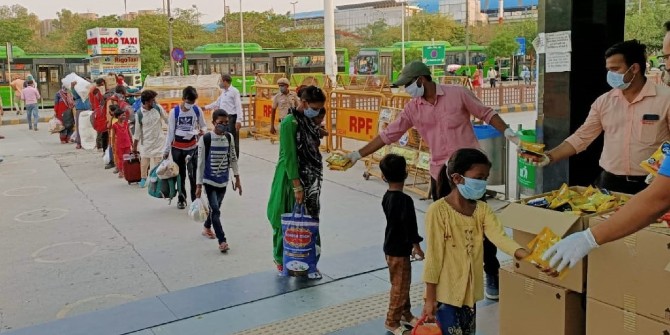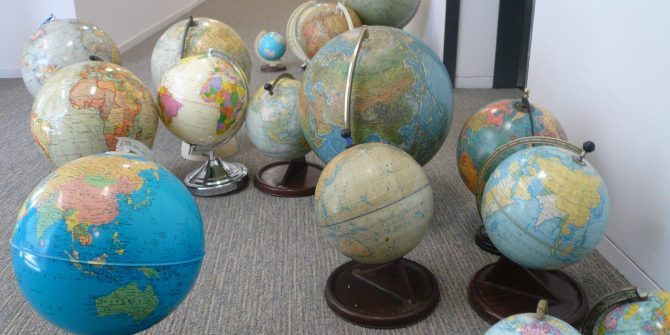Wealthy countries are first in line in the queue for vaccines, and the WTO is refusing to suspend patent enforcement so that poorer countries can manufacture generic versions. Most people will have to wait until 2022. This is unconscionable, say Shaz Memon and Akber Ali. India in particular is in an excellent position to roll out its own versions.
Last week, at the World Trade Organization’s TRIPS meeting, a consortium of developing nations led by India and South Africa asked the WTO to suspend patent enforcement for any COVID vaccines, as well as processes needed to manufacture them. The resolution was reportedly blocked by the US, EU and other wealthy nations.
The motivation behind the request is simple: the notion that ‘there should be no monopolies in a pandemic’. The limited supplies available of any successful vaccines for the foreseeable future support the idea that countries such as India, with significant pharmaceutical manufacturing capacities, should be able to create the vaccine supply needed by the global south without fearing repercussions.
Developed countries have publicly remained largely silent on this issue, and much of the media did not report the events at the WTO (and there was no immediate statement from the organisation). There appears to be a consensus in the industrialised world that the need to protect their own citizens’ lives and livelihoods trumps any global humanitarian impulse to do the same in the poorest corners of the globe. Similarly, pharmaceutical companies (and their shareholders) feel entitled to a return on their huge investment in research and development over the last six months.

This is leading the global south to take care of its own, with a new alliance of countries which not only have their own vaccines (notably those in trials in Russia and China) but their own manufacturing capacity in places such as India.
This approach is completely understandable. Though the business model of pharmaceutical companies must be respected, and profits must be created in order to invest more into R&D of new products, the preservation of life is more urgent.
There is a continued risk of economic peril or civil unrest if some populations see other parts of the world returning to normality while they are left behind.
Medical professionals in particular will be compelled to have the preventative measures they need in order to save lives. Governments will similarly seek to look after their citizens’ welfare, particularly when there is a continued risk of economic peril or civil unrest if some populations see other parts of the world returning to normality while they are left behind.
Oxfam has found that there will not be enough vaccines for most of the world’s people until 2022.That could mean a full two years of the world’s poorest (who are often, due to living conditions and lack of access to healthcare, at the highest risk of death from COVID) waiting in line.
Another benefit of distributed vaccine manufacture without regard for patents is the simpler supply chain. If a vaccine is made in India and distributed across South Asia, for example, that will require fewer cold-chain supply lines to keep the vaccines at chilled or freezing temperatures. It is that cold-chain supply that will be a limiting factor in vaccine distribution, particularly amongst rural communities where a village may not have running water or electricity, let alone an industrial-sized fridge or freezer where large amounts of what will be a valuable and scarce product can be securely stored.
The issue of security – and the associated challenges of transparency and equitable distribution – cannot be ignored in the context of the global south, where governance structures are often less robust than in richer nations. We cannot allow history to repeat itself, and for preventable deaths to continue unabated simply because of an individual’s misfortune in where they were born.
Infectious diseases like polio, tuberculosis and measles still take millions of lives each year, despite vaccines having been available for decades or longer. As professionals working in healthcare and with connections and projects in developing countries, we are acutely aware of not only the possibility but the likelihood of this historical norm being continued – unless a generic, patent-free vaccine (and associated manufacturing process) can be secured. The alternatives, like COVAX, led by Gavi (the vaccine alliance) and the World Bank’s vaccine financing for poorer nations address the funding problem (although the latter involves high interest debt in less developed countries, which is far from ideal).
But funds are only of any use if a vaccine can be manufactured in sufficient quantities and delivered to enough locations. Currently, this simply does not seem possible.
As the only country with a significant generic drugs sector, India has not only an opportunity, but an obligation to create and distribute the vaccines the world needs.
India is uniquely placed to resolve the problem of supply, and based on their representations to the WTO, its leadership is keenly aware of this. The country has a long track record of manufacturing treatments that violate patents held by pharmaceutical companies, often based in Western industrialised nations. Protected by India’s 1970 Patents Act, which does not recognise most drugs patents, the industry has grown exponentially, and is a key export sector.
Despite these compelling arguments, the WTO – perhaps under pressure from industrialised nations or after lobbying from pharmaceutical firms – has not agreed to the suspension of patents.
As the only country with a significant generic drugs sector, India has not only an opportunity, but an obligation to create and distribute the vaccines the world needs. To head off allegations that it was improperly profiting from them, a generic vaccine could be provided at cost, and only to those who demonstrably need it and are excluded from other supply agreements. Opposition from pharmaceutical companies will be reduced if a generic vaccine is not competing for their high-value clients amongst the governments of wealthy nations.
There should be no monopolies during a pandemic. Just as the restrictions on our liberties and damage to many livelihoods this year has been unprecedented, so should the relaxation of intellectual property protections. To do anything else would be not only inhumane but ultimately unworkable. COVID is a global threat, and the only way to eradicate a global pandemic is to act in a globally coordinated way, as the world did successfully with smallpox in 1959. That success can only be replicated in 2021 through the use of generics. Those who stand in its way should think carefully about the irreversible damage they will do to the world’s health, economies and societies.
This post represents the views of the authors and not those of the COVID-19 blog, nor LSE.






2 Comments